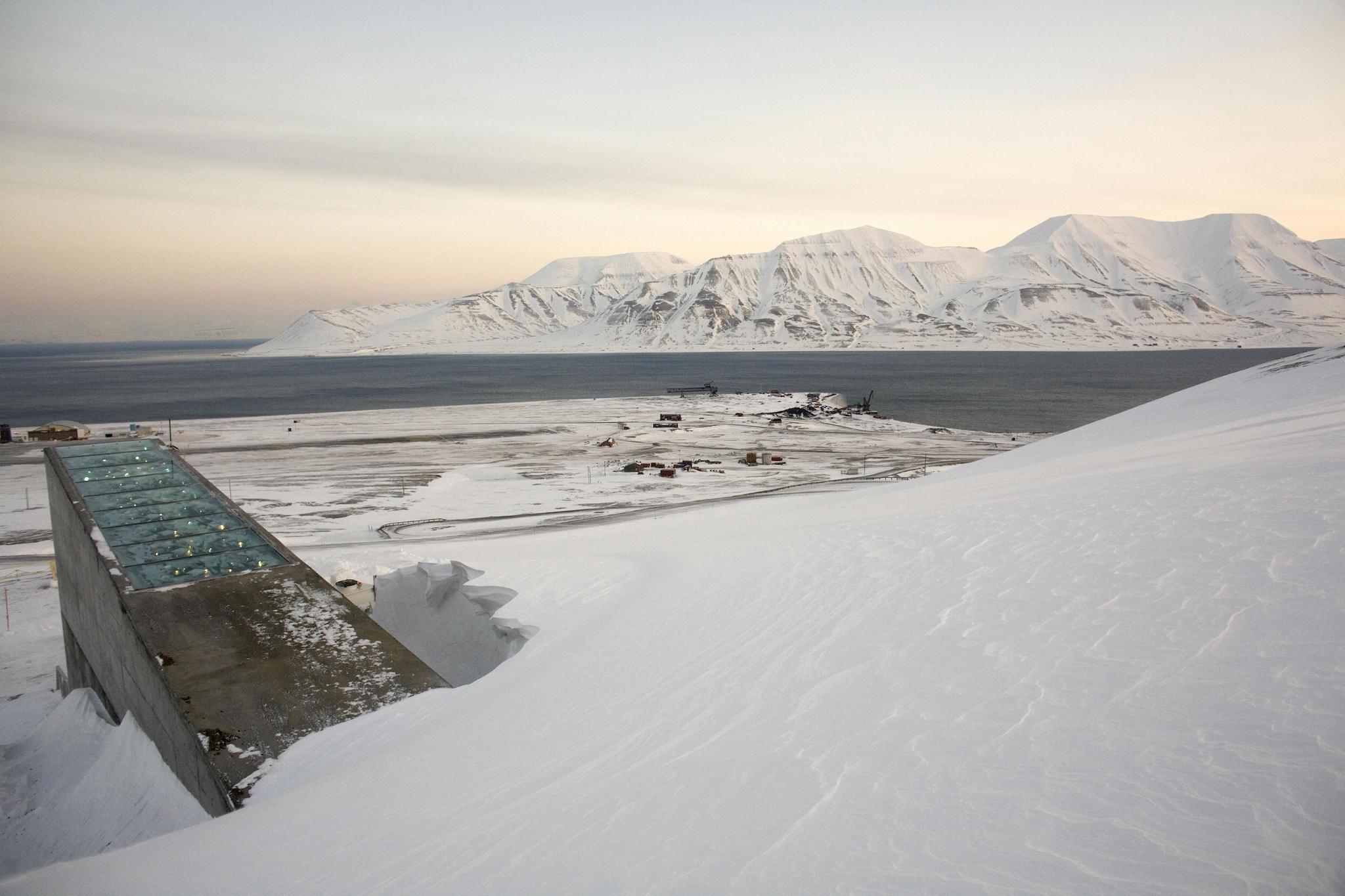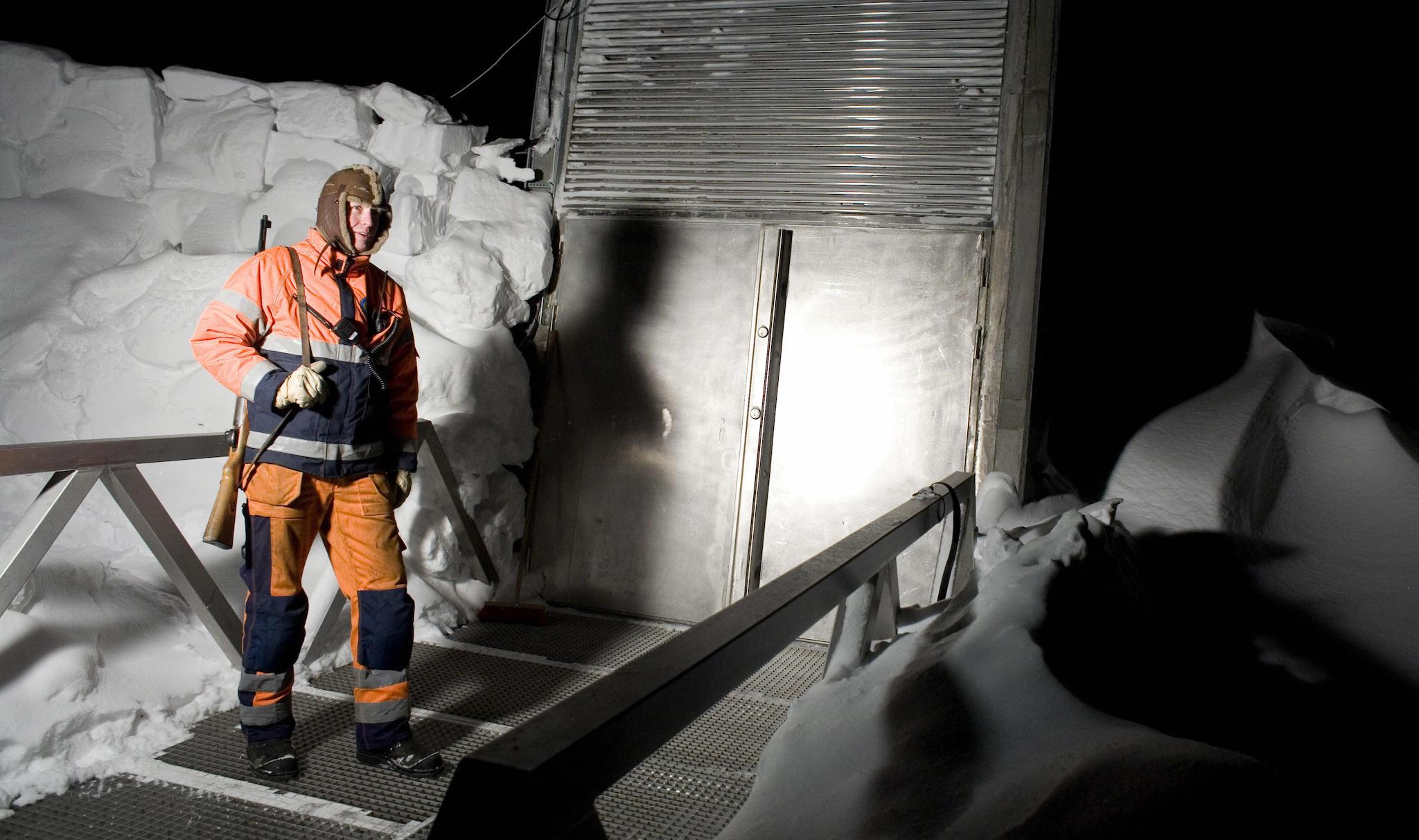Seed vaults protect the world from the apocalypse – but what if doomsday is already here?
‘There are doomsdays happening all the time’
The Svalbard Global Seed Vault was built to help us through the end of the world. But nobody expected that hints of doomsday would arrive quite so soon.
The seed bank stores the crops and plants from around the world on a frozen island in Norway, protecting biodiversity. At least it was frozen until recently – when the permafrost that was thought to be a reliable blanket around it started to melt.
Permafrost, as its name suggests, isn’t supposed to go anywhere. When it melted, it served as a reminder that even those supposed temples of security that preserve our biodiversity are at risk – that climate change and other threats are putting the entire world in danger, even the parts that we’ll rely on to save us from that very same danger.
Now the Norwegian government is spending more money to protect the Svalbard bank, located on Spitsbergen, about 800 miles from the North Pole, upgrading its security to ensure that it is entirely waterproof and ready for whatever is thrown at it. The crypt – so often referred to as a “doomsday vault” – is working to avoid its own downfall.
But those behind the Svalbard facility prefer to avoid the name “doomsday vault” – not because it is inaccurate, necessarily, but really because it’s too accurate. The vault is intended as a fail-safe, but we’ve already failed.
“‘I don’t like the name,” says Marie Haga, executive director of the Crop Trust, which looks after the bank.
“When you are concerned about safeguarding biodiversity, crop diversity, then the loss of just one variety might be catastrophic. Because that might have been the variety that could solve big problems. So there are doomsdays happening all the time.”
One such event has arrived in Syria in recent years; as well as the complete destruction of the homes and lives of people living in the country, the genebank in Aleppo was destroyed. Thankfully those seeds had been backed up by the Svalbard vault – and the Aleppo seeds are the only withdrawal to have been made from that crypt.
There was no such luck for the seed banks in Iraq and Afghanistan, which were mostly destroyed by war. Some of the seeds they looked after had been saved and taken to the seed bank run by the International Centre for Agricultural Research in the Dry Areas, in Syria, before war arrived and destroyed that seed bank too.
Svalbard might be the most famous seed bank in the world, and the figurehead of a mission to protect the huge diversity of plant life on Earth. But it is just one of a global network of 1700, spread all across the world, each of them protecting and securing the biodiversity of the countries they call home.
The Millennium Seed Bank looks, from the ground, like any other office complex built in the countryside: beautifully designed, curved rows of almost-sheds. As you’d expect from Kew, it’s surrounded by lush plants, including in picturesque ponds that sit outside the buildings.
But lurking beneath there is a structure built to last the very worst that the world can throw at it. Two storeys beneath the offices are vaults, made up of concrete designed to last for 500 years.
It is packed with all sorts of different measures: humidity sensors watching for the possibility of flooding, despite the fact that the location was chosen because it is high up on a sandstone ridge and should be safe from water. The walls are thick enough to withstand a plane crash – not an entirely theoretical measure, given Gatwick is about 20 minutes away.
Inside those vaults are hidden seeds that could one day be used for breakthrough work on the plants that keep us alive.

The Svalbard Global Seed Vault, on the other hand, looks a lot more deserving of its doomsday moniker. Its door stick up through the ice like a spacecraft landed on some frozen planet, jagged edges ripping into the cold Norwegian air.
The vault itself a place of immense natural security and protection. It looks less like a centre of scientific study and more like a crypt, albeit one with the explicit aim of bringing those who are stored inside it back to life.
Inside the mountain that houses the vault it is very cold, around -4C, meaning that less work needs to be done to cool the seeds down to the required -16C for storage. In the event of a catastrophic event that knocks the power offline, the seeds can only warm to around -4C and will therefore be better preserved.
Getting to the vault itself is also very difficult: Spitsbergen is a very cold, very harsh island, home to a local community who look after it. “So the location itself is its own security measure,” says Haga.
It’s also not at particular risk of earthquakes, volcanoes or other natural disasters, and is 120m above sea level. “It is harder to think of a safer place on the globe to have a vault than this.”
But even this vault, built to protect its important deposits from the end of the world, has been threatened by the pace and power of global warming. Last year, the permafrost that surrounds the vault started melting, and that water began to find its way into the tunnel that leads to the vault.
“When we have had a bit of water coming into the tunnel leading to the vault, it is because the permafrost has not come back around the tunnel, as we have expected,” says Haga. “That’s due to a hotter climate – so climate change has actually contributed to the need for this upgrade.”

Now the Norwegian government has announced that it will spend $13m (£9.4m) – more than it cost to build the vault – on protecting and securing it.
“When the vault was constructed 10 or 11 years ago, no one would even have considered that the permafrost would not be permanent in Svalbard,” says Haga. “Climate change has gone much faster than expected – the fact of the matter is that back then you couldn’t have imagined that the permafrost would not have come back.”
“It’s fair to say that agriculture has never ever faced such big challenges as it does today,” she adds. “That is partly due to population growth, but more importantly due to climate change.
“The basic problem for food production these days is that the climate changes faster than the plants that feed us are able to adapt.”
Jonas Mueller, senior research leader in seed conservation at the Royal Botanic Gardens, Kew, recognises the proximity and potency of those threats. But looking out from the Millennium Seed Bank he is optimistic: “the message is positive”, he says.
“Yes, there are all the threats to what we call plant diversity – from our own own figures, we know that about 21 per cent of them are threatened with extinction over the next 30 years or so. That hasn’t changed, new data has only confirmed that.”
He recognises that there are a range of different threats to that diversity, including agriculture, logging and more, all of which contributes to the “traumatic changes” the world is experiencing. “Plants, and plant diversity, are on the losing side of that.”
But the existence of places like the seed vault are a demonstration of the positive work, too. “The good news is that we have all this technology in our hands to ensure that no species needs to go extinct,” says Mueller. “That one plant species might be the solution to whatever particularly bad disease, or it might lead to a new crop variety,” he adds.
In that respect, plant conservation isn’t necessarily about keeping the plants we currently need. It’s about keeping plants that we might need in the future – because we don’t know what unimagined benefits they will give us one day.
“You could say that conservation of this diversity is to safeguard options,” says Haga. “It’s to give us options in the future – for each variety we lose, we lose options.”
Crops that are suitable for the climate of a country in the present, may, because of climate change, become unsuitable in the future. If, for example, southern Europe continues to warm then its own wheat might not survive. One solution would be to import crops that flourish in intense weather from North Africa. It’s a way of thinking that could become life-saving in the future.
Both Mueller and Haga are keen to stress that their work is governed by important international agreements ensuring each country owns its own seeds. So the country that collected the wheat crops would have to assent to having them used in Spain, for instance.
“Wheat originates in the Middle East – in Syria, probably,” says Haga. “Now we grow wheat all over the world, but it took 12,000 years for it to move around.
“Now climate change goes so fast that these poor plants aren’t able to adapt. That’s why breeding becomes so important, and hopefully allows us to find varieties that could help us in the future.”
Indeed part of the vaults’ mission is to ensure that we still have access to flowers that could one day become a miracle cure for disease, or crops that are able to withstand temperatures, pests, diseases or just taste better than what we have today.
Thankfully the protective technology developed in the last decade has progressed at the same rapid rate as the horrifying threats.
“Just imagine what techniques a plant scientist had 50 years ago,” says Mueller. “And what techniques we can now use, and what techniques we will have in 50 years time.
“Those seeds we collect today will still be available, and in many cases I don’t know what their uses might be.”
Join our commenting forum
Join thought-provoking conversations, follow other Independent readers and see their replies
Comments
Bookmark popover
Removed from bookmarks